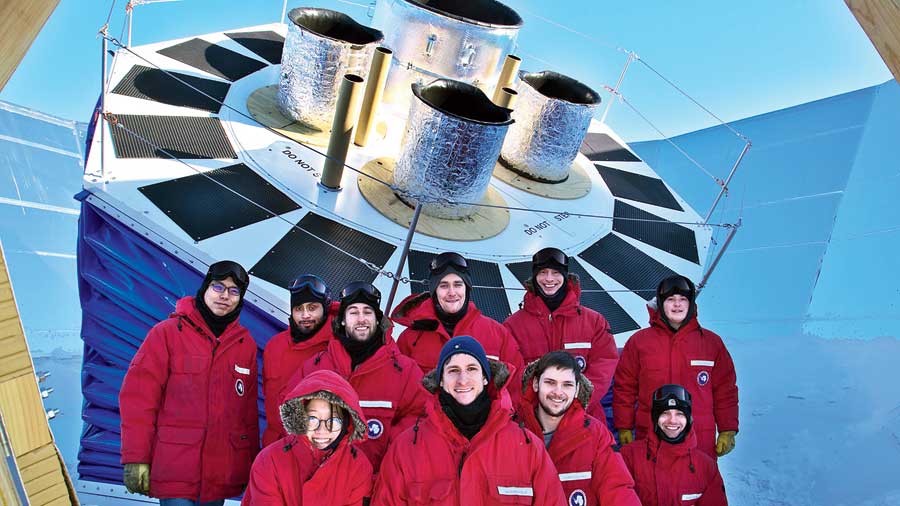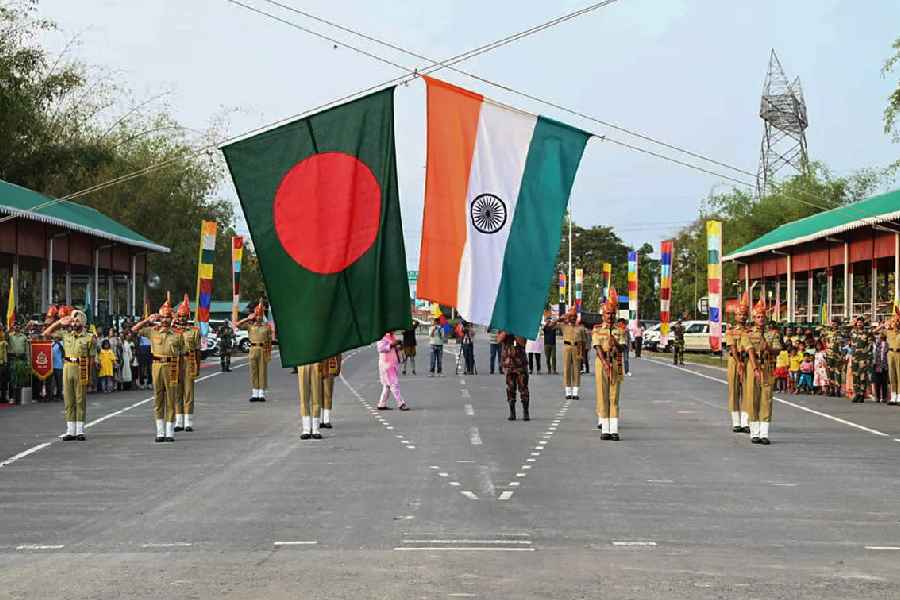The year was 2019 — a time before protests and lockdowns — and I was leaving sunny Los Angeles, US, for the icy desert of Antarctica to set up a telescope that would observe light from the Big Bang, helping us comprehend the origin of our universe. Protected by the Antarctic Treaty of 1961, it is the last bastion of exploration on Earth.
From Christchurch in New Zealand, the US Air Force first flew us to McMurdo, the largest base on the seventh continent, in an LC-130 aircraft. At one point, I got up to peer through the porthole, craning my neck to look past the enormous wing. I was rewarded with a view of the ocean as it froze under us. Thereafter we flew over absolute whiteness disturbed sporadically by black volcanic mountaintops.
From Yumthang (Sikkim) to Jungfraujoch (Switzerland), no vista had prepared me for the view from the Phoenix airfield in McMurdo, set atop volcanic rocks beside the Ross Sea. Endless ice sheets spread out in every direction, meeting up seamlessly with Mount Erebus — aptly named after the Greek deity born from the primordial void. I stood agape, subzero air filling my lungs, until an air force officer kindly guided us to a warm bus. The specially-designed buses are colossal, with 10 six-foot wheels for traction, and can function as emergency survival pods. We made only a brief stop before flying to the South Pole.
Unlike McMurdo, serenity does not greet us there. Sergeants yell orders to move quickly into the station. As the cargo bay opens, their message crystalises, just like the water around us. At –35°Celsius, cold penetrates our gear, ice crystals gust horizontally and visibility is a mere five metres.
The Amundsen-Scott South Pole station, the only shelter in a 1,000-km radius, looks like a fortress from the outside and a spaceship from the inside. Everything exists within this monolith, including a dining hall, science labs and recreational areas. Underground (technically, under ice), waste and fuel are processed in icy caverns. While traversing the connecting tunnels, my breath formed icicles. The temperature hovered around –60°C and my sense of pain around numbness. The South Pole station must withstand temperatures of –90°C with wind speeds above 15 knots, as well as six months of complete darkness. An engineering marvel, the labour and ingenuity required to maintain it is unrivalled.
Onsite, I met fellow Caltech scientist Christine Moran who operated the 10-metre South Pole Telescope. She was one of the 50 finalists for Nasa’s astronaut class of 2017 and her training at the South Pole was critical in propelling her to the finals. Incidentally, astronaut Kristina Koch too was once a researcher here. I had lunch with a Nasa astronaut trainer and he said that from a logistical perspective, working on these telescopes at the South Pole is as challenging as manning the International Space Station. He joked that if someone had to rush home from the ISS, they could rocket home in 48 hours; it would take a week from the South Pole.
In that harsh environment, exposure can easily lead to hypothermia and frostbite. Our telescope assembly involved significant alfresco hardware work. Once, I had to erect a 200-foot carbon-fibre mast with a microwave calibrator on the roof of our observatory. I was working at –45°C and with windspeed of 7 knots on electronics and mechanical assemblies. To be nimble, I took off my bulky outer gloves. This resulted in frost-nip and the numbness in my finger lasted two months.
During my two-month trip, we worked 14-18 hours a day, six days a week. A typical day involved manual labour with wrenches, electronics design and soldering, computer programming and mathematical calculations. There was little downtime aside from sleeping and eating. The Internet was available for only an hour when a satellite passed over the Antarctic horizon, a blessing in disguise. I could focus my few free hours in the art room and library.
We worked round the clock with celebrations on Hanukah, Christmas and New Year’s Day. With six months of light and six months of darkness, time is an odd concept here. As is space, since you see no boundaries, and our noetic efforts become poetic.
I had travelled to the end of the earth to study the beginnings of the universe; 3,80,000 years after the Big Bang that gave rise to the universe, neutral hydrogen (the simplest atom) formed. This freed up photons (light) to travel freely. We see these cosmic photons as a background of microwave light today and call it the Cosmic Microwave Background (CMB). To measure CMB photons, we must avoid atmospheric water. Extreme low temperatures in addition to the altitude (2.84km) of the South Pole ensure minimum humidity as water vapour quickly precipitates as snow and ice.
The violent expansion (called inflation) after the Big Bang should have resulted in the production of gravitational waves (GW) or ripples in space-time. These primordial GWs leave a swirly signature on the CMB. Cosmologically recent GWs were measured by the Ligo experiment, winning Caltech physicists Kip Thorne and Barry Barish, and MIT’s Reiner Weiss the 2017 Nobel Prize. We now want to measure GWs so far in the distant past that they are too faint for Ligo to detect. Our newest telescope, BICEP-Array, can image the swirly imprint in the polarisation maps of the CMB to give us a peek into a time when the universe was young. BICEP stands for background imaging of cosmic extragalactic polarisation, and Array refers to a set of four telescopes, each the size of a car. Caltech is collaborating with Harvard, Stanford, the University of Minnesota and other partner institutions on this project.
Measurements of cosmology have taught us a great deal about what followed the Big Bang. Now we are attempting to understand the mechanism underlying the birth of our universe.
The writer is a postdoctoral scholar at the California Institute of Technology and Nasa’s Jet Propulsion Laboratory











